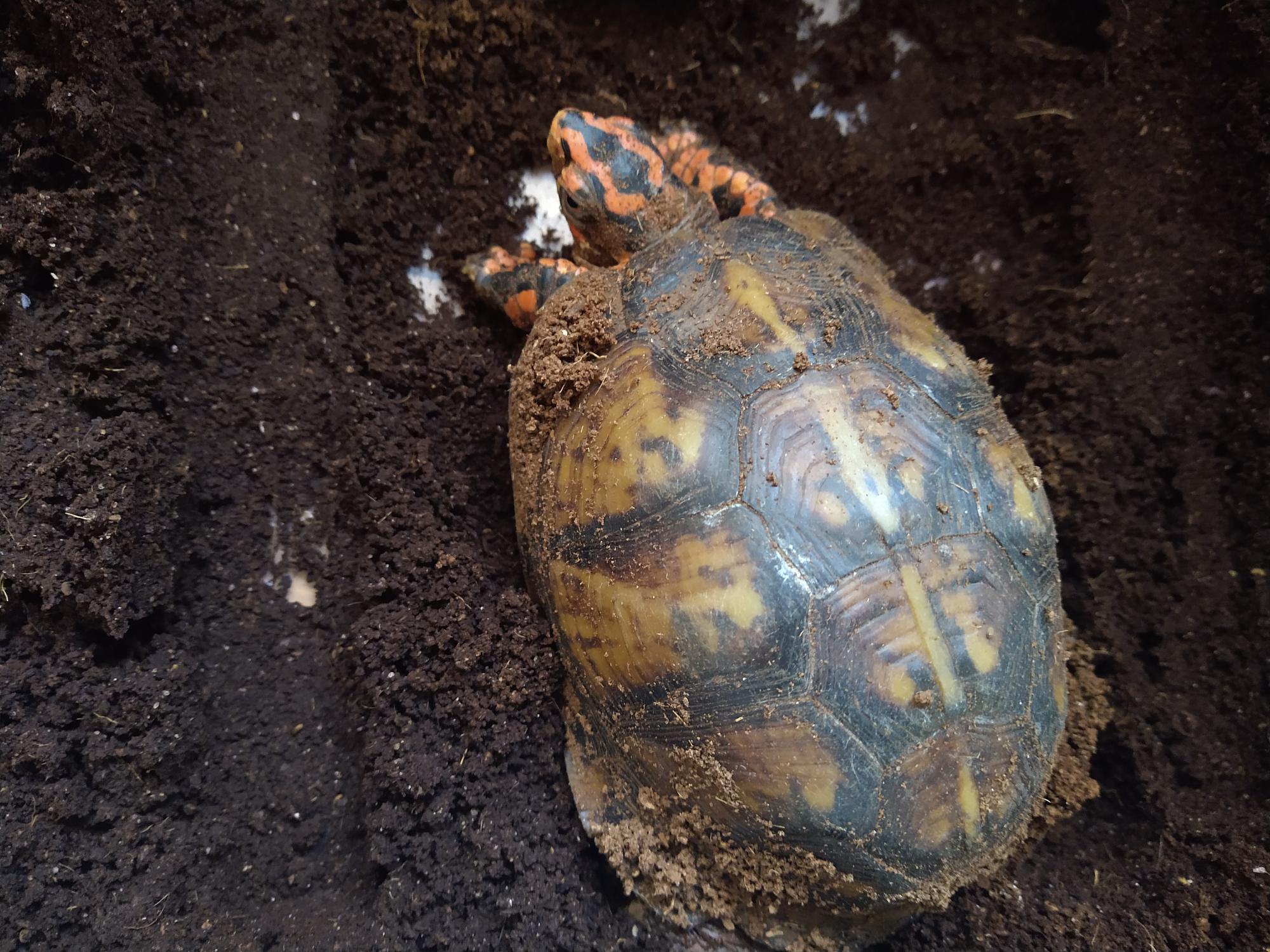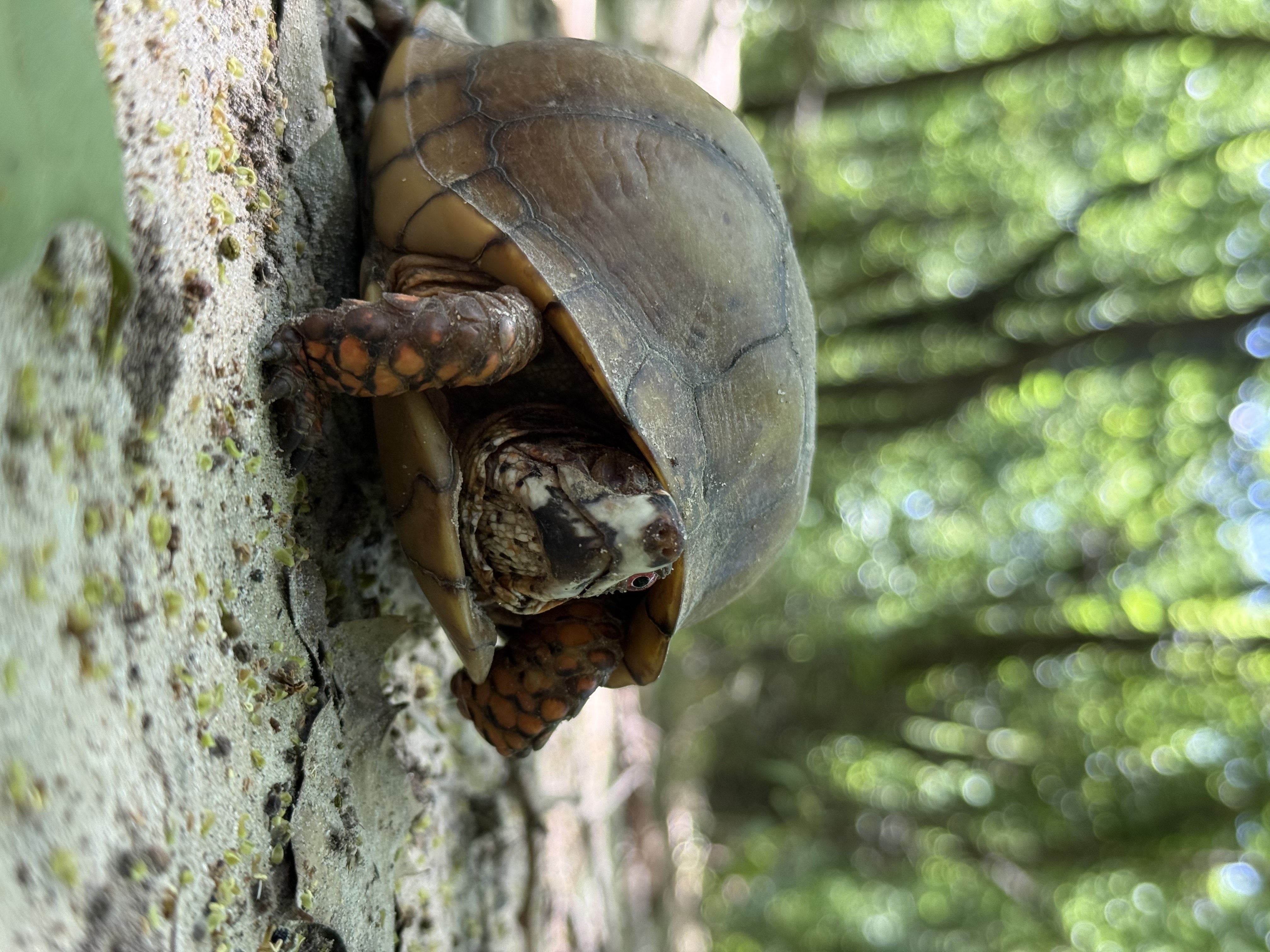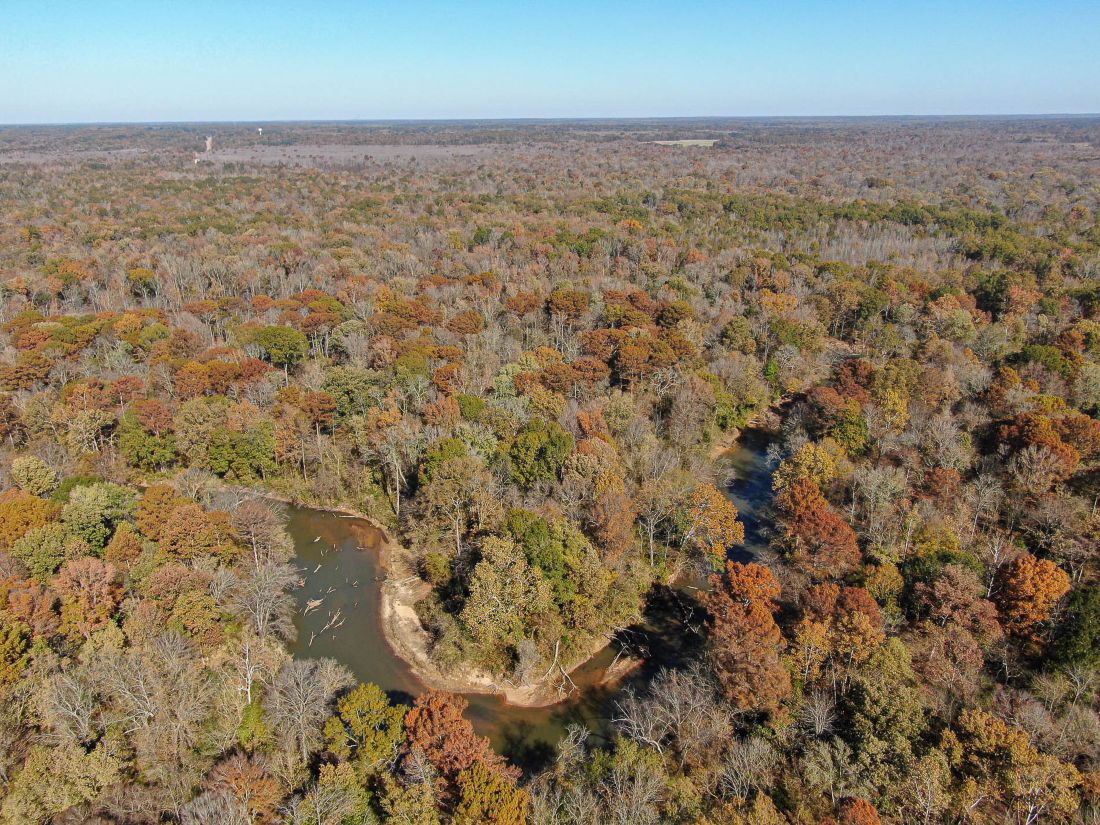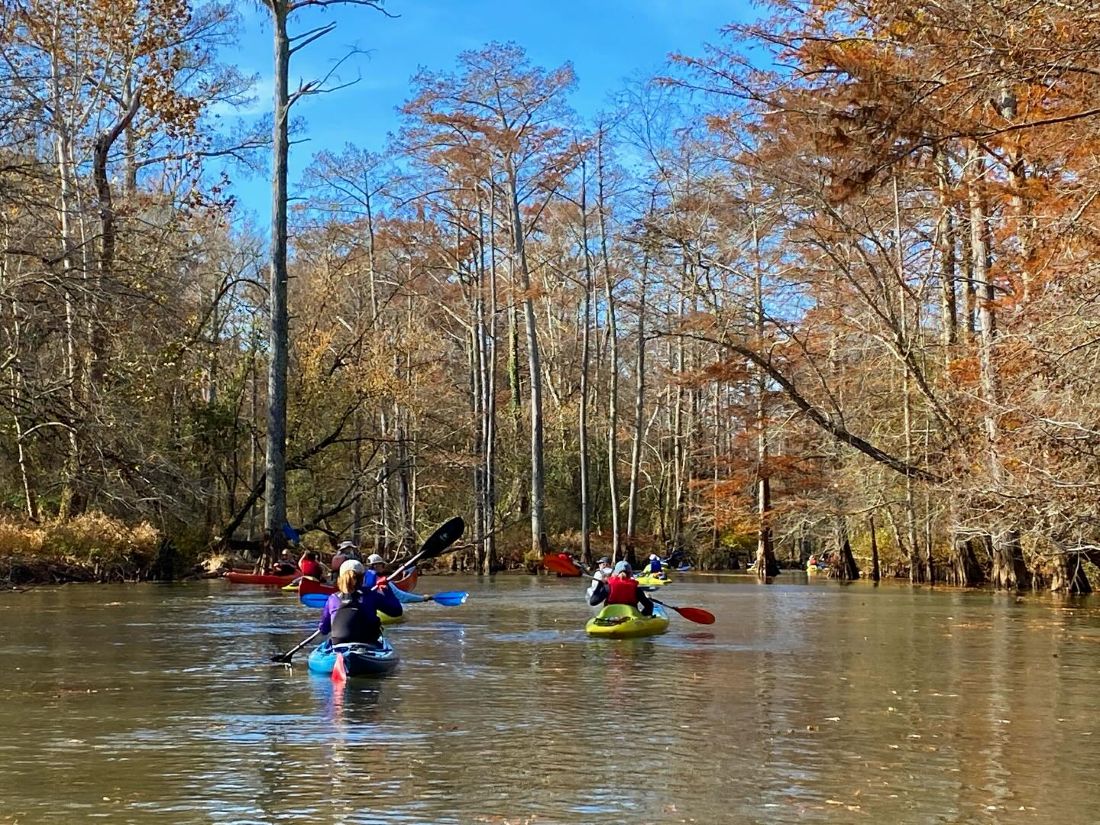Natural Highlights: Eastern Box Turtles


A recent encounter with one of several Eastern Box Turtles (Terrapene carolina carolina) which live along the Wolf River Greenway at Epping Way, reminded us that box turtles are not only charming creatures in their own right, but excellent avatars for the cause of conservation. With a high-domed carapace reminiscent of an army helmet, a box turtle has a hinge on its plastron (ventral shell) which can shut like a door, or a box, when the turtle is threatened, tightly sealing its head and legs inside, and safe from terrestrial predators like raccoons and foxes. A box turtle shell is formed by the fused ribs and spine of the turtle, and is composed of bone and living tissue underneath and keratin scales or scutes on top which provide a variety of appealing colors and patterns.
Once extremely common, box turtles are now listed as threatened or vulnerable in most of the eastern states where they live, suffering a slow decline due to multiple factors. Chief among them are habitat loss and fragmentation, challenging life history traits, and the pet trade.
Turtles, in general, are slow to grow, slow to reach sexual maturity, and slow to reproduce. Their eggs and hatchlings are highly vulnerable to predation, and the chance that a baby turtle will live long enough to produce offspring itself is minuscule. Box turtles have the additional challenge of being mostly terrestrial, harmless, slow-moving, and frequently encountered by people who sometimes exploit them, or take them home as a pet, or remove them from the habitat for whatever reason. Taking an adult box turtle and its reproductive potential from the wild might deal an irreversible blow to the future of that local box turtle population. In addition, good captive care for box turtles, which have special needs for nutrition, lighting, and temperature, isn’t easy. Some well-meaning folks assume box turtles belong in a pond or an aquarium, thinking they are pond turtles which bask on logs – but box turtles are not adapted to aquatic life and can easily drown. They prefer moist woods and fields, where they forage for tasty morsels, burrow under logs and leaves, and soak in shallow puddles now and then.
Box turtles show strong site fidelity to their small territories of about 2 acres, meaning a site is their place and the place they want to stay forever. If they are displaced – by habitat loss or another reason – they will try to return to that site. We don’t really know what happens to all of the box turtles which are permanently displaced, their origin unknown or their home territories destroyed, but it’s likely contributing to their decline in the wild.
The 138-acre Epping Way property, owned and managed by the Wolf River Conservancy for conservation and education, provides the habitat needed by the box turtles living there: wetlands for soaking and drinking, fields and sunny spots for basking and nesting, and abundant berries, mushrooms, plants, worms and other small animals for eating. We hope that box turtles will always be there, living their slow lives, for generations to come.
For more information on box turtles, see the following links:
https://www.nwf.org/Educational-Resources/Wildlife-Guide/Reptiles/Eastern-Box-Turtle
https://www.facebook.com/watch/?v=987394946060540
https://www.tn.gov/twra/wildlife/reptiles/turtle/eastern-box-turtle.html
Eastern Box Turtles along the Wolf River Greenway highlight the need for habitat protection as these iconic, vulnerable creatures face growing threats.











